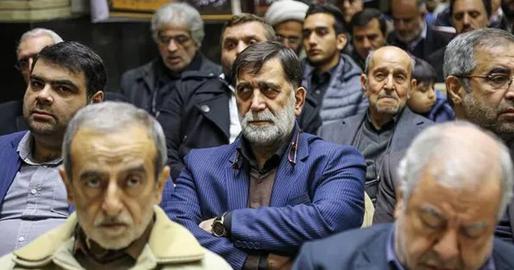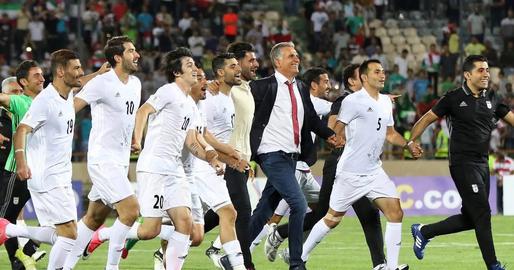This article is part of a 22-part miniseries on the history and stars of Iranian football released ahead of Iran's participation in Group B of the 2022 Qatar World Cup in November. You can explore the rest of the series here.
Since the creation of the Islamic Republic of Iran in 1979, sports and football – like most other innocuous pursuits – have been co-opted by the new Iranian regime as tools for mass surveillance. The beautiful game was largely securitized. The Iranian Football Federation was filled with managers close to the government. And the two principal football clubs, Taj and Persepolis, were confiscated by the state.
The clubs were renamed Esteghlal [Independence] and Piroozi [Victory]. Decades later the original name of the latter would be restored. They remain Iran’s most popular clubs; in fact, according to the Asian Football Confederation (AFC), Persepolis is the most popular club in Asia, with more than 30 million fans. Esteghlal has another 25 million.
Over time, a few other discrete political incidents since the revolution have changed the face of the game completely. One was on February 16, 1990. That day, Persepolis and Esteghlal both had matches scheduled, at Tehran’s Azadi and Shiroudi stadiums respectively. Due to heavy rain, though, referees and the Tehran Football Board took the decision to cancel both.
News of the cancellations was not published. Tens of thousands of fans gathered outside their respective venues, and each thought they were the only ones affected; that was, that the government had deliberately sought to undermine their club, and no other. So extensive by now was the level of government interference in sport that this seemed plausible. Fans of both teams poured into the streets, chanting “Death to the Islamic Republic”.
At the time, Hassan Ghafourifard was the head of the government’s Physical Education Organization. His close relationship to Iranian intelligence services is now widely known. That day, Ghafourifard announced the Tehran Football Board was to blame, and accused those involved of a deliberate conspiracy to undermine festivities for the anniversary of the Islamic Revolution. Hasan Amin Bakhsh, then-head of the Board, was arrested by Intelligence Ministry operatives hours later, as were several of the fans.
In the aftermath of the skirmish in Tehran, both Esteghlal and Persepolis came under the control of military and security bodies. Initially in 1990, the presidency of Esteghlal was taken over by die-hard regime loyalist Ali Agha-Mohammadi, who was named in 2009 by Asr-e Iran as one of the regime’s three “permanent insiders” (the others were politician Mohammad Shariatmadari and Ayatollah Mahmoud Hashemi Shahroudi). Agha-Mohammadi met Iran’s current Supreme Leader, Ali Khamenei, for the first time during his high school years.
The next year Kazem Olyaei of the IRGC’s Intelligence Organization, and a former officer in Hamedan governorate, was chosen to replace him. Today the title is held by Ali Fatolahzadeh, Agha-Mohammadi’s niece’s husband, while the CEO of Esteghlal is none other than Mostafa Ajorlou, an ex-police officer and serving commander in the IRGC.
Persepolis met a similar fate. Among its managers and board members in recent years have been Amir Abedini, a former governor of Khorasan and former officer in the security forces in the 1980s, Abbas Ansarifard, a member of the parastatal Martyrs Foundation’s security division, Sardar Akbar Ghamkhar, a logistics commander of the IRGC, Mohammad Rouyanian, an ex-IRGC commander, Habib Kashani, a commander of the West Tehran paramilitary Basij force and responsible for sending teenagers to fight in the Iran-Iraq war in the 1980s, Iraj Arab, head of the Ministry of Sports’s security division, and Mohammad Hassan Ansarifard, a former intelligence operative.
In August this year, a man named Abbas Esmail Beigi was barred from entering football stadia in Iran due to his violent behavior, up to and including toward former players. Esmail Beigi formerly fought on behalf of the IRGC in Syria and is accused by ex-prisoners of being among the perpetrators of crimes against humanity at the notorious Kahrizak Prison, a secret detention center where participants in Iran’s 2009 pro-democracy protests were held and tortured, in some cases to death. In the mid-2000s he was gifted leadership of the Persepolis FC Fans Association.
These two are, of course, not the only football clubs in Iran. But they are emblematic. You can read more about the IRGC’s incursions into Iranian football in Thugs on the Stands, our report and panel discussion on the phenomenon of securitized sports in Iran, which was published last July.
visit the accountability section
In this section of Iran Wire, you can contact the officials and launch your campaign for various problems























comments